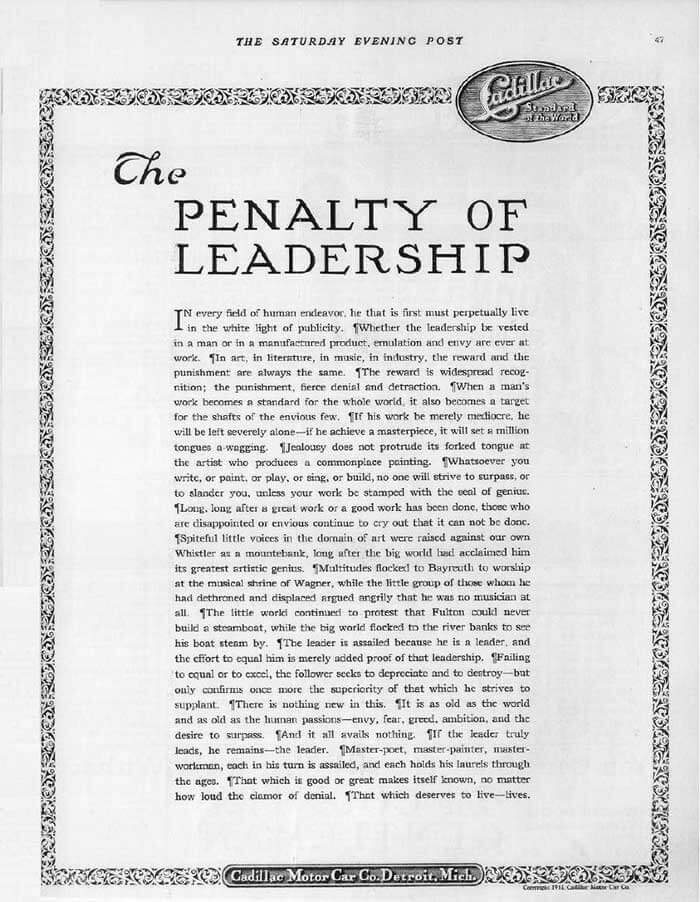The ongoing feud among the marketers (content marketing vs. native advertising) doesn’t seem to end soon. Time for us to jump in!
Where Did It All Begin?
It all began a long time ago, even when there was no Internet around – most likely, in North America in the late 19th century. In 1861, one Samuel Wagner launched “American Bee Journal” to provide its readers with valuable beekeeping tips and – oh, well – promote his own movable-frame hive and beekeeping methods.
By the way, the journal exists to this very day – on the Internet, of course.
Shall we call Mr. Wagner’s editorial policy “content marketing”? I guess we should even though the term itself didn’t quite exist back then.
Another notable example is “The Michelin Guide” first published by the French tire manufacturer Michelin in 1900. It contained a lot of helpful tips for drivers (how to maintain their cars properly) and also had information about decent lodging when on a trip. It also continued alive and well into the 21st century.
All these were examples of the first major attempts at content marketing in the analog era. What about native advertising? Do its roots go back in time too?
Oh, yes. The first prominent examples of native advertising can be traced back to the early 20th century when the businessmen started to view the media as a potential source for something more than regular paid advertising, which had existed for quite some time already.
Check out this cool article posted by Cadillac Motor Car Co. in the Saturday Evening Post in 1915.

By all signs, it can be classified as a native advertising piece – not quite subtle by today’s standards but native nevertheless.
As you can see, content marketing and native advertising had existed long before we were even born. It’s only now that they have come into a fight with each other for being Internet marketers’ №1 choice for online promotion.
Now that we’ve got some cool facts to share with a friend at a party, let’s try to define both terms and see how different they are by design.
Definitions of Content Marketing and Native Advertising
According to a definition by Content Marketing Institute (yes, there’s actually one),
Content marketing is “a marketing technique of creating and distributing valuable, relevant and consistent content to attract and acquire a clearly defined audience – with the objective of driving profitable customer action.”
A few things I’d like you to take away from this well-put definition.
1. “Valuable, relevant, and consistent content” – man, this is just golden. If only everyone who attempts at content marketing considered this, that Interweb thing we use every day would’ve been a much better place 😉
- Can’t make anyone interested if your content doesn’t bring any value – there go stupid pointless articles written for the sake of stuffing as many keywords as possible.
- Can’t get people to read you if the content is obscure and outdated. Gotta follow the trends and write about what’s hot now.
- Can’t make people stick with your resource if you’re not providing consistently good content.
2. “A clearly defined audience” – well put, sir, well put. You can’t make everyone like you. If you’ve got to appeal to an audience, you need to define it very clearly, using various segmentation techniques like buyer persona (“How to Create Buyer Persona for Your Business and Get More Clients”).
3. “With the objective of driving profitable customer action” – another quote you can’t argue with. Of course, no form of marketing exists just for the sake of existence – all of them have quite clear, tangible goals. As in this case with content marketing, the goal is to obtain a certain profitable action from a customer, whether it’s a subscription, purchase, or scheduling an appointment.
Now that we’ve figured out what content marketing is, let’s move on to the native advertising.
As defined by ShareThrough,
Native advertising is “a form of paid media where the ad experience follows the natural form and function of the user experience in which it is placed.”
Although it may seem a bit vague at first, this definition makes a lot of sense. How do we tell an ad from not an ad? Well, it’s usually marked as one or placed somewhere where ads are supposed to be – like billboards, classifieds, commercial breaks on TV and so on.
Native advertising, however, is not quite like that. It mimes the surroundings by cleverly disguising itself as a legitimate article, picture, video, or text while still being an advertisement by nature.
Some of you may remember the term “product placement”, which is kind of related to native advertising being one of its precursors.

YES! The Pepsi vending machine isn’t there simply by chance – rest assured it’s all have been paid for and accounted for.
Other related terms that may come to your mind are “infomercial” (information + commercial) and “advertorial” (advertisement + editorial) – both refer to the practice of disguising clearly promotional materials as legitimate editorial content.
I’m sorry to disappoint you, folks, but the humanity is gone – you can barely trust anyone these days as marketing is ruling the world 🙁
Well, except for me 😉
Content Marketing vs. Native Advertising: Comparison
Let’s run content marketing and native advertising against each other in a table and take a closer look at what makes them so different from each other.
Purpose
- Content marketing: Provide value + obtain a desirable action from the readers + build trust and engagement over a long period of time.
- Native Advertising: Increase brand awareness in a natural, gentle, and non-intrusive way + promote a certain product or service.
Goals
- Content marketing: Build and promote a brand. Expand the audience reach. Support the sales funnel/purchase cycle.
- Native Advertising: Promote a brand. Drive sales. Increase brand awareness and visibility.
KPIs
- Content marketing: Number of leads. High-quality links. Likes, shares, etc.
- Native Advertising: Views. Site traffic. Social engagement.
Tone
- Content marketing: Knowledgeable and authentic tone that doesn’t promote anything outright. Usually, it addresses some problems that readers may have in the form of ready-made solutions or tips.
- Native Advertising: Salesy, straightforward commercial tone to make an impression from the start. Sometimes, a faux friendly tone to make the reader believe that it’s a regular piece of content.
Benefits
- Content marketing: Establishes a firm connection and trust between the editor and readers, which allows achieving higher conversion rates.
- Native Advertising: Doesn’t suggest long-term implementation. Brings results fairly quickly once done.
Challenges
- Content marketing: Requires long-term investment and doesn’t bring immediate results. Involves trial-and-error approach until the right way is found. Requires much more time and effort than native advertising.
- Native Advertising: Quite costly to implement and scale. Limited strategic potential as readers nowadays have become much more aware of any sales pitch than ever before.
Resources
- Content marketing: Requires content creators – copywriters, editors, designers etc. Needs search engine optimization.
- Native Advertising: Requires a hefty budget. May require content creators.

As you see, the two are quite different in almost every aspect. Hence, from now on it’s a crime to mix up content marketing and native advertising – if you ever see someone do it, send them to my blog for some marketing education 😉
What’s Better for Your Online Business?
Well, the questions itself isn’t valid – content marketing isn’t really BETTER or WORSE than native advertising. Depending on what your company is and what your goals are, you may want to prefer one to another.
Content marketing is a great way of promotion if:
- you’re a fledgling online business and want to build an audience in an organic way
- you want to get more leads
- you want to spread the word about your brand and business via social sharing
- you want good-quality, organic traffic
- you want to climb closer to the top of the search-engine results page
Native advertising will suit you just fine if:
- you want a quick boost in sales
- you want to increase brand awareness across certain target groups
- you want to promote a certain product/service effectively
Both ways are good in their own terms – the choice is up to you!
Conclusion
Thanks for reading this article “Content Marketing vs. Native Advertising: Which One Is Better & Why?” – I hope you found it useful for your own business.
The right thing to do would be share this article with your friends on the social networks – just click on one of the icons of social media, it’s that easy.
If you have further questions on the subject, please write them in comments – I’ll be glad to answer.
Want more? I’ve got plenty of articles on various brand-related topics – here are some of the most recent ones:





Comments0